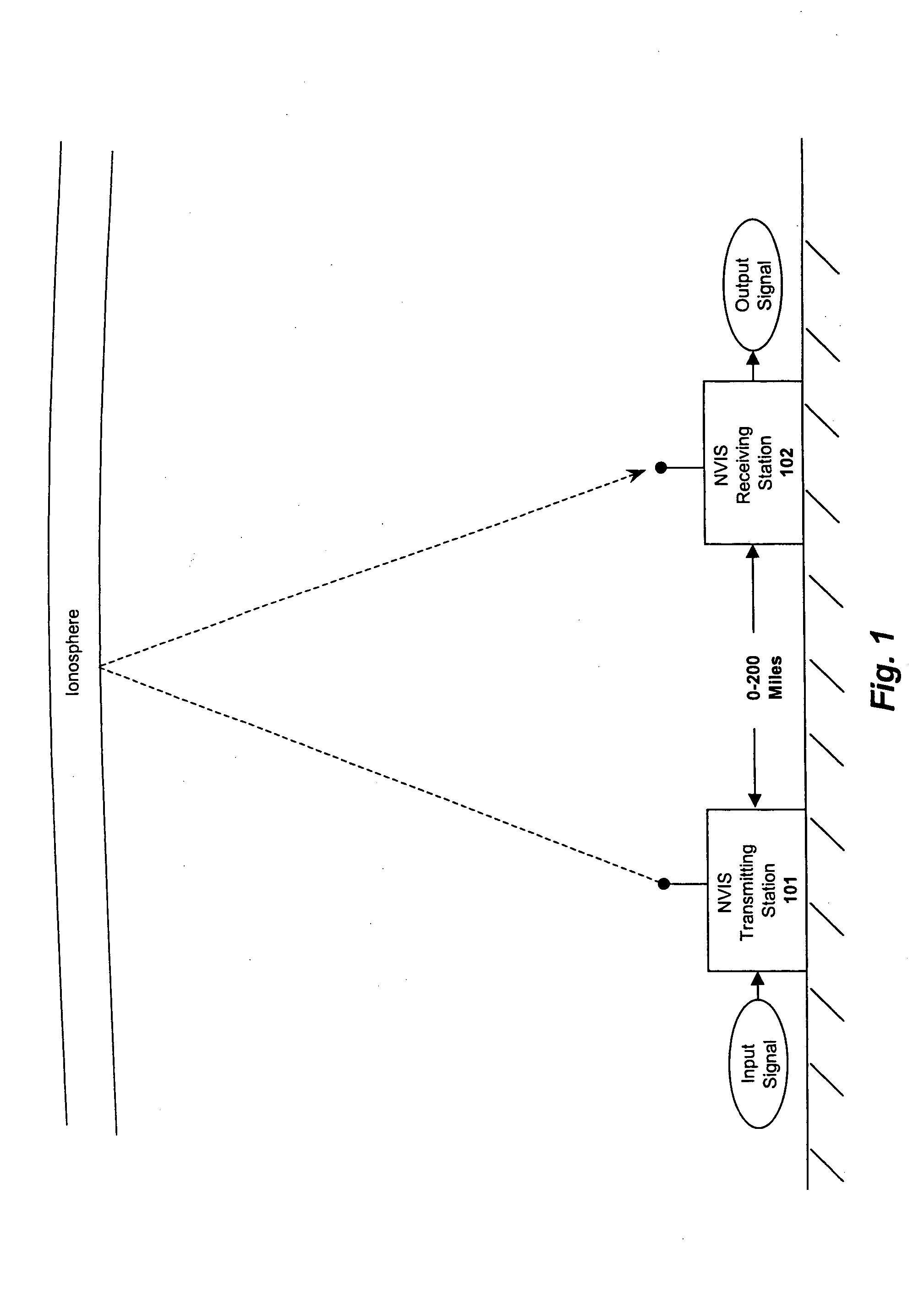System and method for enhancing near vertical incidence skywave ("NVIS") communication using space-time coding
a space-time coding and communication system technology, applied in the field of communication systems, can solve the problems of cellular data networks, impracticality of delivering high-speed two-way data signals over large geographical areas, and extremely complex and expensive infrastructur
- Summary
- Abstract
- Description
- Claims
- Application Information
AI Technical Summary
Benefits of technology
Problems solved by technology
Method used
Image
Examples
Embodiment Construction
[0025] In the following description, for the purposes of explanation, numerous specific details are set forth in order to provide a thorough understanding of the present invention. It will be apparent, however, to one skilled in the art that the present invention may be practiced without some of these specific details. In other instances, well-known structures and devices are shown in block diagram form to avoid obscuring the underlying principles of the invention.
EMBODIMENTS OF THE INVENTION
[0026] One embodiment of the invention employs Multiple Input Multiple Output (“MIMO”) signal transmission techniques to increase the signal-to noise ratio and transmission bandwidth within a Near Vertical Incidence Skywave (“NVIS”) system. Specifically, referring to FIG. 2, in one embodiment of the invention, a first NVIS station 101 equipped with a matrix of N MIMO directional antennae 102 is configured to communicate with another NVIS station 103 equipped with a matrix of M MIMO directional...
PUM
 Login to View More
Login to View More Abstract
Description
Claims
Application Information
 Login to View More
Login to View More - R&D
- Intellectual Property
- Life Sciences
- Materials
- Tech Scout
- Unparalleled Data Quality
- Higher Quality Content
- 60% Fewer Hallucinations
Browse by: Latest US Patents, China's latest patents, Technical Efficacy Thesaurus, Application Domain, Technology Topic, Popular Technical Reports.
© 2025 PatSnap. All rights reserved.Legal|Privacy policy|Modern Slavery Act Transparency Statement|Sitemap|About US| Contact US: help@patsnap.com



